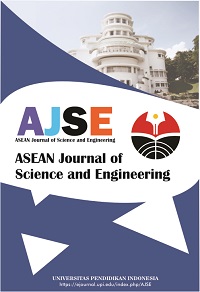Efficiency of Investment Project Evaluation in the Development of Innovative Industrial Activities
Abstract
Keywords
Full Text:
PDFReferences
Floricel, S., and St-Pierre, J. (2003). Evaluating risk in the innovation projects of small firms. Asac, 1, 01705623.
Glushchenko, V. (2021). Project model of organizations'activities and development of a business plan for an innovative project during the development of the eighth technological order. The Scientific Heritage, 77(3), 21-34.
Hertz, D. B. (1964). Risk analysis in capital investment. Harvard Business Review, 42, 95-106.
Ivanter, V. V. (2017). Structural and investment policy as an instrument for modernizing the Russian economy. Studies on Russian Economic Development, 28(4), 364-372.
Junkes, M. B., Tereso, A. P., and Afonso, P. S. (2015). The importance of risk assessment in the context of investment project management: a case study. Procedia Computer Science, 64, 902-910.
Kim, W. C., and Mauborgne, R. (2003). Fair process: Managing in the knowledge economy. Harvard Business Review, 81(1), 127-136.
Lane, N. (1999). Advancing the digital economy into the 21st century. Information Systems Frontiers, 1(3), 317–320.
Lin, J. Y. (2011). New structural economics: A framework for rethinking development. The World Bank Research Observer, 26(2), 193-221.
Pistor, K. (2013). A legal theory of finance. Journal of Comparative Economics, 41(2), 315-330.
Shaturaev, J. N., and Jumaev, H. S. (2019). Small business, innovation and entrepreneurship. International Journal of Advanced Research, 7(11), 303–307.
Usboko, M. G. (2018). 主観的健康感を中心とした在宅高齢者における 健康関連指標に関する共分散構造分析. Gastrointestinal Endoscopy, 10(1), 279–288.
Usman, E. V, and Mikhailova, L. V. (2020). Risk assessment of investment projects of aviation industry enterprises using a comprehensive indicative approach. Evaluación Del Riesgo de Proyectos de Inversión de Empresas Del Sector Aeroespacial Mediante Un Enfoque Indicativo Global, 41(5), 288.
Žižlavský, O. (2014). Net present value approach: method for economic assessment of innovation projects. Procedia - Social and Behavioral Sciences, 156(April), 506–512.
Асаул, А. Н. (2013). ОРГАНИЗАЦИЯ ПРЕДПРИНИМАТЕЛЬСКОЙ ДЕЯТЕЛЬНОСТИ (учебник). Международный журнал прикладных и фундаментальных исследований, 2, 104-105.
Коврижных, И. В. (2006). Анализ и оценка эффективности управления в организации. Барнаул: АФ СибАГС, 12.
Коссов, В., Лившиц, В., and Шахназаров, А. (2000). Методические рекомендации по расчету эффективности инвестиционных проектов: вторая редакция. Инвестиции в России, 1, 4.
Непомнящий, Е. Г. (2003). Инвестиционное проектирование. Таганрог: ТРТУ, 5, 29-56.
Новоскольцева, Ю Ю., Ш. Н. К. (2016). Методические аспекты комплексной оценки эффективности инвестиционных проектов. Вопросы Управления, 273–278.
Панина, И. В., and Попов, М. И. (2016). Определение сущности понятия «экономическая эффективность» для целей анализа эффективности деятельности коммерческих организаций. Современная экономика: проблемы и решения, 4, 168-177.
Райзберг, Б. А. Современный экономический словарь/Райзберг БА, Лозовский ЛШ, Стародубцева ЕБ 2-е изд., испр. М.: ИНФРА-М. 1999. Электронный ресурс]. Режим доступа: http://dic. academic. ru/dic. nsf/econ_dict/7358 (дата обращения: 30.06. 2015 г.), 86.
Савчук В.П. (1998). Оценка эффективности инвестиционных проектов. Учебник. – М.: 1998. – 114 с.
Тимонина, И. Л. (2017). Стратегия инновационного развития Японии: на пути к четвертой промышленной революции. Восток. Афро-Азиатские общества: история и современность, 4, 128-142.
Черников, А. Ю. (2013). Методика оценки окупаемости инвестиций в образовательные программы для персонала. Проблемы экономики и юридической практики, 6, 330-333.
DOI: https://doi.org/10.17509/ajse.v3i2.45675
Refbacks
- There are currently no refbacks.
Copyright (c) 2022 Universitas Pendidikan Indonesia

This work is licensed under a Creative Commons Attribution-ShareAlike 4.0 International License.












